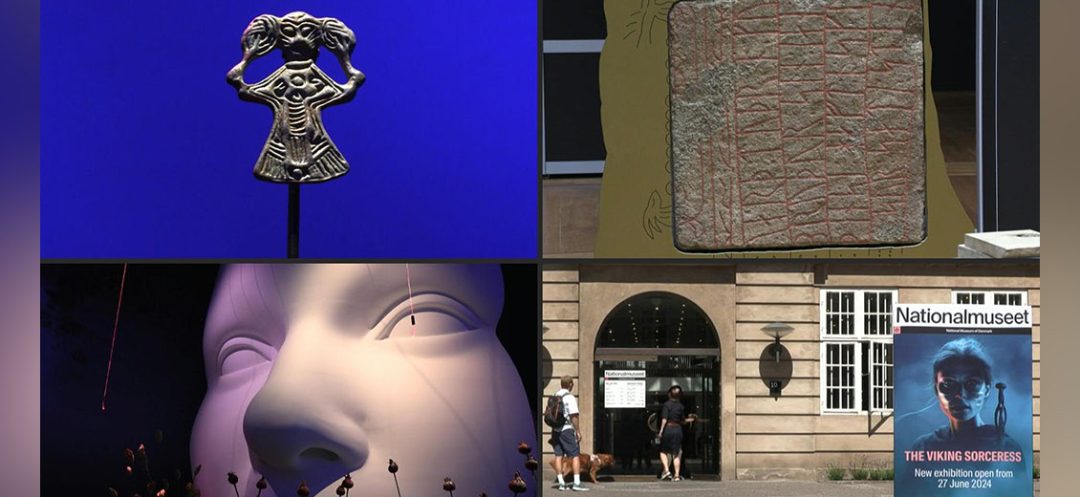The National Museum of Denmark sheds light on the “völva,” a mystical female figure from the Viking era. This groundbreaking exhibition explores the crucial role of these prophetesses in ancient Scandinavian society, between power and marginalization.
In the collective imagination, Vikings often evoke fierce warriors, skilled traders and intrepid explorers. Yet, a lesser-known aspect of this fascinating civilization is emerging today through an innovative exhibition at the National Museum of Denmark. At the heart of this presentation lies the “völva,” a female figure somewhere between a witch and a druid, who played a key role in ancient Scandinavian societies.
Peter Pentz, a researcher involved in curating the exhibition, describes the völva as “a kind of female shaman.” More than just a seer, she was a prophetess capable of predicting the future and, according to contemporary beliefs, of flying and interacting with the gods. The sagas, orally transmitted narratives for centuries before being recorded, testify to the importance of these women in Viking culture.
The exhibition, open since June 27, immerses visitors in the fantastical world of völva prophecies. It showcases tales of the future and the end of the world, the famous Ragnarök, now popularized by cinema and television. This immersion is made possible through meticulous assemblies of jewelry, amulets, runes, saga excerpts and archaeological discoveries that provide deeper insights into this enigmatic figure.
A central element of the völva’s identity was her staff, as Peter Pentz explains: “The word ‘völva’ means ‘staff carrier.’ A völva is always a woman who carries a staff.” The exhibition notably presents remains from a völva’s grave, discovered at the site of King Harald Bluetooth’s fortress. This burial suggests that some of these women held positions of influence, perhaps even as royal advisors.
Contrary to some misconceptions, women in Viking society enjoyed a relatively advantageous position compared to their counterparts in other parts of Europe. For instance, they had the right to seek divorce in cases of domestic violence, illustrating an uncommon degree of autonomy for the time.
The exhibited artifacts also reveal the practices of these prophetesses. Besides the characteristic iron staff, there is a purse containing hypnotic herbs, likely used to achieve the trance state necessary for their predictions. The presence of items from distant lands in these graves underscores the importance placed on mystical knowledge associated with foreign lands.
Despite their established role, völvas occupied a marginal position in society. Often widowed or unmarried, they lived outside the farms, the basic units of Viking agricultural society. This marginality, though different from that of witches in later centuries, speaks to the complexity of their social status.
The power of the völva lay in her profound knowledge of nature and her ability to answer existential questions that have always concerned humanity. As Peter Pentz highlights, “People from all times have questions, questions about life (…), she had the answers.”
The advent of Christianity gradually erased the role of these prophetesses from collective memory. It was only through the study of Icelandic sagas that scientists rediscovered their importance. According to Peter Pentz, the functions of the völva were dispersed among different characters in medieval society, including priests, suggesting a form of survival of this tradition through various incarnations.
This exhibition at the National Museum of Denmark marks a first by placing a female figure at the center of its narrative. It thus offers a fresh perspective on Viking society, revealing the complexity of its social and spiritual structures. By exploring the role of the völva, the exhibition invites a reconsideration of our understanding of this civilization beyond warrior stereotypes.
Through jewelry, artifacts and ancient narratives, visitors are transported into a world where mysticism and reality intertwine, offering a fascinating glimpse into the role of the supernatural in Viking daily life. This dive into the world of Viking witches is sure to captivate the public, enriching our knowledge of this crucial period in Scandinavian history.
With AFP


